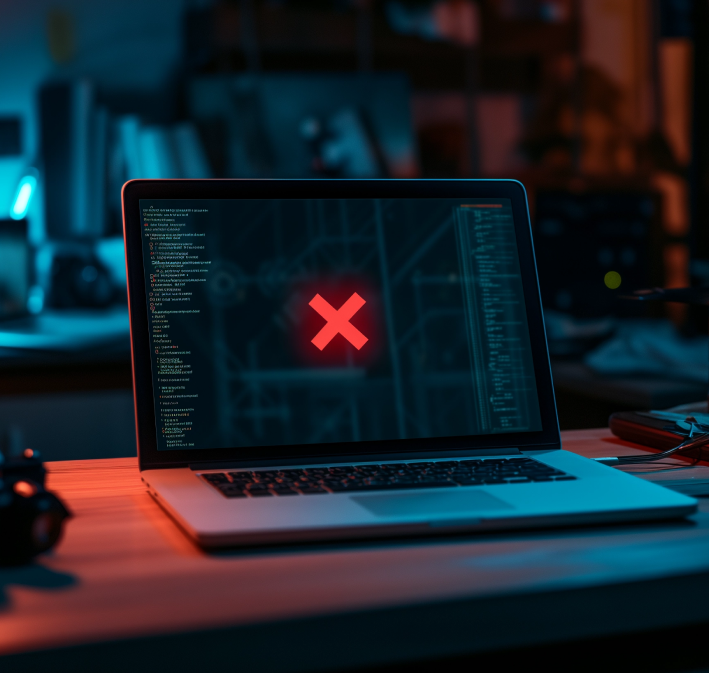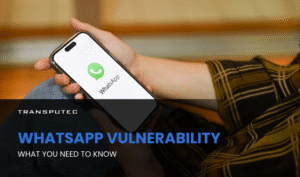Attacks using Ransomware are increasing frequently, making it easier for organisations and individuals to fall victim to cybercriminals. According to an international study, 31% of organisations surveyed across 77 countries had been affected by ransomware attacks. Although anyone anticipates falling victim to cybercrime, it is crucial to know what to do when an attack occurs. Either a modest data loss or a major cyber disaster may be avoided with a prompt and composed response.
In this article, we’ll walk you through five key steps you can take after you become a ransomware victim.

Protect Your Business from Ransomware
Ready to enhance your organisation’s cybersecurity posture and protect against ransomware threats?
Contact us today to get in touch with our team of experts at Transputec.
1. Contain the Attack
The immediate aftermath of a ransomware incident demands swift action. An effective and prompt response can confine the impact to a limited number of devices or minimise the scope of compromised data. To mitigate the fallout from an assault, it is imperative to swiftly isolate the affected segment of your network. Notify critical networks of the breach without delay. In larger organisations, this necessitates immediate contact with the IT department and issuing a warning through the company’s communication channels.
Furthermore, deactivate and disconnect as many devices as possible to halt the spread. However, refrain from powering down computers already infected as it can obstruct forensic process. If accessible, disconnect routers and network cables to sever additional devices from the network. Additionally, IT teams should disconnect backup servers from the company’s network to safeguard backups from the impact of the attack.
2. Notify Parties about the Attack
Once the ransomware problem has been successfully contained, the next action is to notify other parties that may be able to provide support about the attack. First, take a picture or screenshot of the message. This will be important documentation for determining which particular strain of ransomware was used in the assault.
Notify any external IT team or cybersecurity business that your organisation works with about the incident so that they can begin determining the degree of the damage. Cybersecurity professionals may be able to decrypt in some cases, which could eliminate the need to pay the ransom.
If your company has insurance against ransomware, let the insurance company know as soon as possible. Even with limited knowledge about the attack, getting in touch with the insurer allows for the investigation of alternatives regarding ransom payment or covering incurred expenses.
3. Evaluate Whether to Pay the Ransom
It’s vital to carefully consider your options before deciding whether to pay the ransom demand. It’s critical to understand that recovering your data is not a given when the ransom is paid. Certain groups of ransomware could just take off with the money without giving the decryption key. In certain cases, ransomware variations may even pretend to be able to access your files to demand payment, even when they have been erased.
A thorough investigation into the ransomware gang behind the assault and the particular strain of malware used may provide important information. This could include looking at whether the team has kept its decryption promises in previous instances.
4. Recover Data from Backups
You might be able to recover most, if not all, of your data if you have backups and refuse to pay the ransom. Start by making sure your backups are complete by confirming their integrity (when unplugged from the compromised network section). A lot of advanced ransomware attacks specifically target backups to prevent attempts to restore data.
Begin to perform a factory reset on all impacted devices and empty your hard drives, supposing that your backups have not been corrupted. Performing this step is essential to remove any remaining ransomware that might be present on your machine.
To avoid any malware infection, use duplicate copies of your backups rather than the originals while the restoration procedure is underway. Even though they might not contain all of the lost data, your backups should greatly lessen the impact of the breach.
5. Conduct a Network Audit
After your company has responded to a ransomware assault, a group of cybersecurity experts needs to thoroughly audit the network. Even when they get access to your network, skilled attackers could still be able to use it to launch more assaults. After the device has been reset, malware leftovers may still be present. Experts in cybersecurity can keep an eye out for questionable activity and help remove any leftover ransomware.
Cybersecurity experts can also use digital forensics to identify the vulnerabilities that attackers are exploiting. Gaining this knowledge can help you strengthen network security and stop future breaches.
It is recommended that all current passwords be changed immediately due to the possibility that passwords may be compromised during the attack. Furthermore, make sure multi factor authentication is activated and working properly because attackers might have tampered with your authentication.
Conclusion
In summary, ransomware attacks can happen without warning, which highlights the significance of acting quickly and decisively in the event of a network breach. Two essential actions to reduce the impact are to isolate the impacted network section and promptly notify pertinent parties. It is essential to carry out a thorough network assessment after an attack to guarantee that all ransomware and attackers have been eliminated.
Transputec, a Managed Security Service Provider provides valuable support and expertise to help ransomware victims recover quickly and effectively. Leveraging its advanced cybersecurity solutions and proactive approach, Transputec assists businesses in overcoming the challenges posed by ransomware incidents.
Are you ready to strengthen the safety record of your company and fight off ransomware attacks? Get in touch with Transputec.
Are you interested in partnering with us?
To Recover From A Ransomware Attack
Connect today for our free consultation!
FAQs
What should I do first if I become a ransomware victim?
Immediately disconnect your infected device from any network or external drives to prevent the spread of the ransomware. This helps contain the infection and prevents further encryption of your files.
Should I pay the ransom to get my files back?
It is generally advised not to pay the ransom as it does not guarantee the recovery of your files and could further fund criminal activities. Explore alternative options such as restoring from backups or seeking help from cybersecurity professionals.
What steps should I take to notify relevant authorities about the ransomware attack?
Report the incident to law enforcement agencies, such as the FBI or local police, as soon as possible. They can provide guidance and may assist in investigating the attack. Additionally, inform your organisation’s IT department or a trusted cybersecurity expert for further assistance.
Is there any way to recover my encrypted files without paying the ransom?
Depending on the type of ransomware and the effectiveness of your backups, you may be able to restore your files without paying the ransom. Consult with cybersecurity experts to explore decryption tools or techniques that could potentially recover your data.
How can I prevent future ransomware attacks on my system?
Implement robust cybersecurity measures such as regular software updates, strong password policies, and employee training on recognising phishing attempts. Additionally, maintain up-to-date backups of your important files and consider using reputable antivirus software to detect and prevent ransomware infections.







